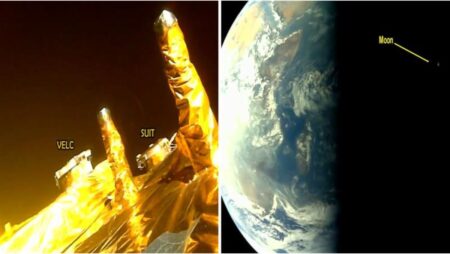The realm of space, known for its ceaseless exploration of the known and unknown, captivates and enthralls individuals all around the globe. In another expedition in the realm of space, the scientists observed a riveting object, WD0032-317B capturing their attention.
This celestial body is now challenging the astronomers’ understanding, making it elusive to draw a distinction between stars and planets. This interesting object falls under the classification of ‘brown dwarf’, and possesses a myriad of extraordinary characteristics.
The Space Brown Dwarfs
Often called ‘protostars’, brown dwarfs are lucent, gaseous entities. The scientists refer to a conventional size range in between the gas giant Jupiter and a tiny star for brown dwarfs, but they have also been reported to go far beyond the size of Jupiter. This particular dwarf- WD0032-317B is reportedly in mass equal to 75-88 Jupiters in total.

Image Source: Quanta Magazine
Although brown dwarfs can undergo fusion of hydrogen isotopes at their centers, they do not however possess the sufficient mass to sustain the robust change in energy levels like our sun does in the reaction of stellar fusion- the source of energy for the sun.
Unusual Features of Brown Dwarf
The general surface temperature of brown dwarfs is 2,200 degrees Celsius (4,000 F) which is not as warm as other stars. A study accepted for publication by Nature Astronomy defies this general understanding to a greater extent.
The WD0032-317B at a distance 1,400 light years away from us exhibits a surface temperature of as high as 7,700 Celsius (13,900 F). This calorific value is intense enough to simulate the breakdown of molecular substances into their atomic level units. This temperature is way greater than that of the sun, which is believed to be 5,504 degree Celsius.
The unusual hot temperature of the dwarf entity is because of its existence in close proximity to an ultra-hot white dwarf star that comes by the name- WD0032-317, and whose surface temperature could reach up to the limits of 36,800 degree Celsius. The brown dwarf was hence named after the white star.
The WD0032-317B orbits this white dwarf star and completes its revolution in a brief spell of just 2.3 hours. In this way, the other side of WD0032-317B remains totally inaccessible to the star, a phenomenon known in astronomy as tidal lock.
The continuous facing of one side of the brown dwarf to the ultra-hot side of white dwarf is why experts believe in extreme igneous temperatures for that side. The other side remains a lot cooler (ranging from 1026-2726 degree Celsius).
The research is currently present on the arXiv server. The researchers suggest that their study could help understand how these stellar infernos cause the evaporation of nearby objects in space.













